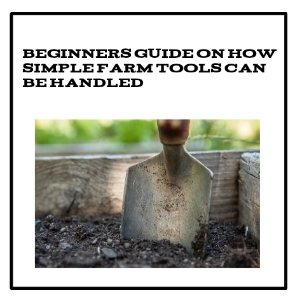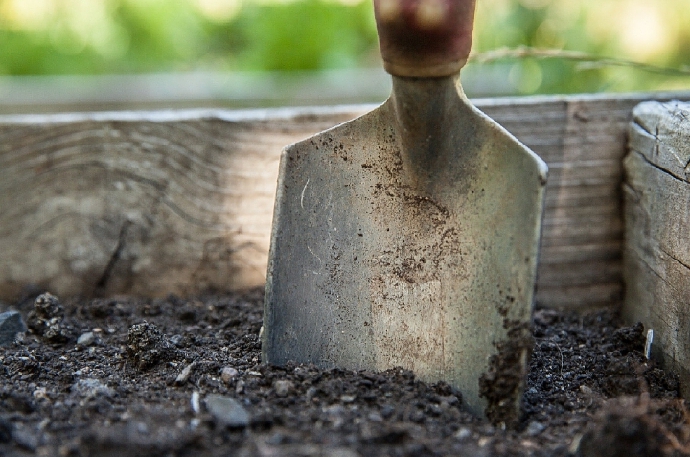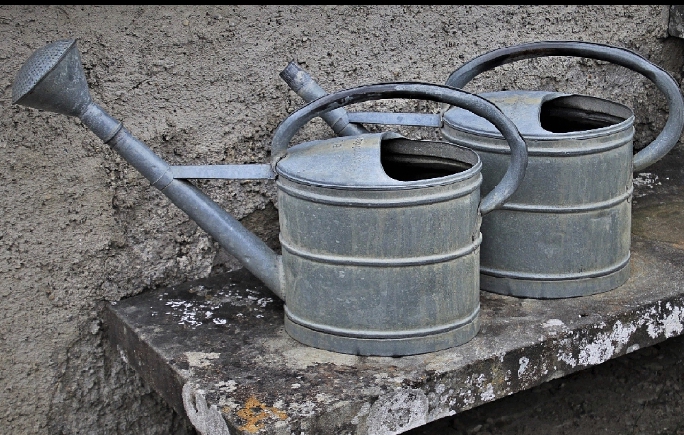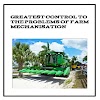These are tools that are simple,handy and it's used mainly by peasant farmers. They are designed to help the hands apply force in farm operations.Some simple farm tools ans their functions will be discussed in this post.
Simple farm tools includes cutlass,hoe, spade,shovel, garden fork, hand fork,hand trowel, rake, axe, headpan, watering can, pick axe or diggers, harvesting knife, root-loading fork, mattock, prunning saw,sickle, budding knife, hay fork, crow bar, brawdal, emasculator, pliers, mallet etc
Cutlass
This is the tool that is mainly used by farmers.There are two main types of cutlass, the one that is slightly curved blade with a wooded handle and the other one with a straight blade and a short wooded handle.One edge of the metal blade is sharp to cut and other is blunt.
Functions/Uses of Cutlass
1. For cutting down and clearing bushes and trees.
2. Cutlass is necessary for transplanting
3. Cutlass can he used to remove weeds from farmland.
4. Cutlass is necessary for seed planting and harvesting.
Maintenance Practice
1. It should not be left lying about.
2. Cutlass should be sharpened regularly
3. Metal parts should be oiled before storage to prevent rusting.
4. Cutlass should be kept in a cool and dry place.
Hoe
The how consists of a metal blade which may either be rounded or slightly rectangular in shape with a wooded handle which can either be long or short.
Types of Hoe
1. West African Hoe: This type not how has a short wooded handle and round metal blade.Its blade is attached to the wooden handle with a prong.
2. West Indian Hoe: It has a long wooded handle and a rectangular metal blade.Thr metal blade has a loop round it's handle.
Similarities between West African Hoe and West Indian Hoe.
1. Both types of hoe have metal blades
2. Both types of hoe have a wooded handle.
Difference between them
1. West African Hoe has a short handle while West Indian Hoe has a long handle.
2. West African Hoe has a round metal blade while West Indian Hoe has a rectangular metal.
Functions of Hoe
1. Hoe is used for weeding.
2. Hoe can be used for harvesting.
3. It is used for land preparation.
4. Needed in transplanting some crops.
5. It is used for making ridges and heaps.
Maintenance Practices
1. Sharpens blunt blades.
2. Always grease or oil metal blade before storage.
3. Clean or wash after use.
4. Keep the hoe in a clean and dry place.
Spade
Functions of Spades
1. It can be used for mixing cement for farm structures.
2. Spades can be used for levelling the soil.
3. Spades is used for lifting the soil and for completely turning it over.
4. It can be used for digging holes during transplanting.
Maintenance Practices of Hoe
1. Always sharpens the blade in regular intervals
2. You should always store spade in a cool and dry space.
3. Keep spade away from rain and termites attack on wooden handles.
Garden Fork
Garden Fork usually has four prongs or teeth which taper to a point.The prongs, made of hard metal are about 20cm long, mounted on a long wooden handle of about 70-80cm long.
Functions of Garden Fork
1. It is used for loading hay.
2. It is used for loading manure.
3. It is used for loosening the soil before transplanting.
4. It is used for turning manure during compost making.
Maintenance Practices
1. Apply grease to metal parts to avoid rusting.
2. Clean the garden fork after use.
3. Keep it dry and store in a cool place.
4. Paint the metal parts before storing for long time.
Rake
Rake consists of a long, wooden handle and a strong metal hard with several stout prongs.Uses of Rake
1. It is used for levelling or spreading soil over after hoeing.
2. It can be used for covering vegetables seed when they are broadcast.
3. For removing stones and weeds from seed-beds.
Maintenance Practices
1. Oil metal parts
2. Clean or remove diet after use.
3. Store in a cool and dry place.
Axe
This consists of a strong wooden or metal handle onto which a solid, flat and heavy metal blades with a sharp edge is inserted. Large axes are held in both hands when in use.
Functions of Axe
1. It is used for felling trees.
2. It can be used for uprooting stumps.
3. Axe can be used to slice or split wood.
4. Axe can be used for cutting wood.
5. Axe is used for uprooting stumps.
MaintenancePractices
1. Always clean after use
2. Keep wooden handles from termites attack
3. Paint, greese or oil metal parts before storing them for long.
4. It should be sharpened regularly.
Headpan
Headpan is a metal container with small circumference at the bottom but a larger one at the top.It has two handles which are opposite to each other.
Functions of Headpan
1. For carrying input and output.
2. For carrying and mixing manure.
3. It used for the collection of harvested crops.
4. It can be used for transplanting seedlings.
Maintenance Practices
1. Wash it after use
2. Keeps away from rain.
3. Store it in a cool and dry place.
Watering can
This is metal or any plastic can fitted with a spout which has a perforated metal sheets called rose, over it's mouth.The rose is removable after use and replaceable when needed.Watering can has two handles used for lifting or carrying the can.
Functions of Watering can
1. It is used to apply water to seedlings in the nursery or vegetables beds.
2. It is used in watering cement blocks used for constructing farm house.
3. It used for light irrigation when there is no rain.
4. It is used in the application of liquid fertilizer.
Maintenance Practices
1. Rinse it water if it's used for applying liquid fertilizer.
2. Store or hand upside down.
3. Store in a cool and dry place.
4. Wash and keep dry after use to prevent rusting.
General maintenance of simple farm tools
1. Oil,greese or lubricate movable joints to reduce friction.
2. Tools should be washed or cleaned after use.
3. Replace worn outs parts.
4. Follow manufacturer's instructions before using implement.
5. Store it a cool,dry place
6. Sharp edges or blade where necessary.
7. Check and tighten loose nuts and bolts daily or periodically.
8. Handle all simple tools with care and use for intended purposes.










0 Comments